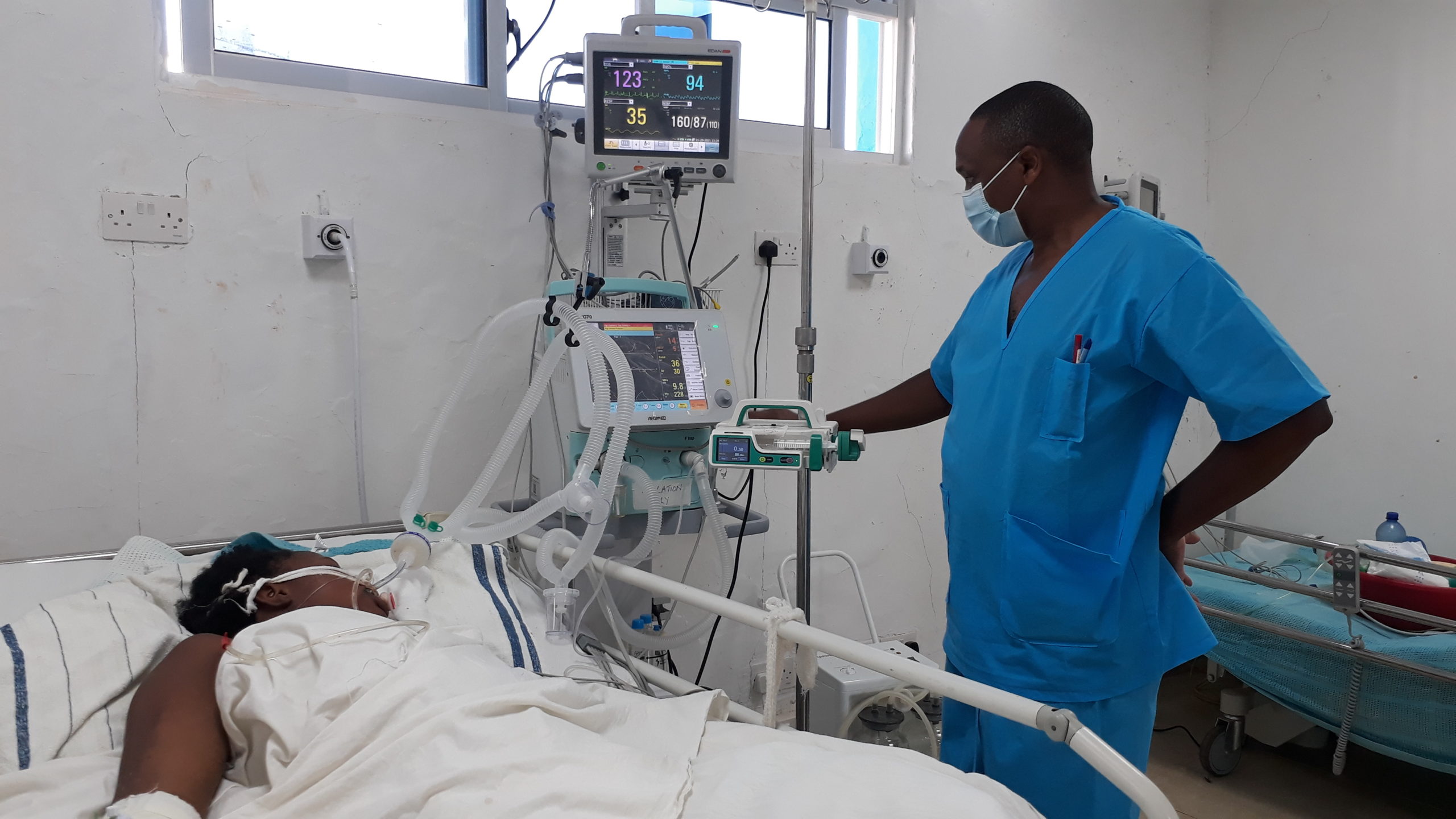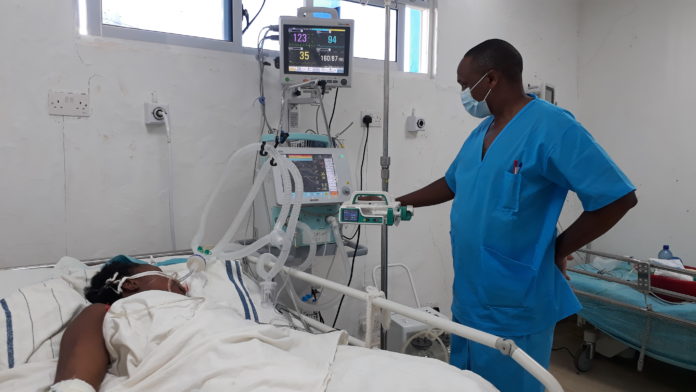By Tebby Otieno and Godfrey Ombogo
Murang’a County, Kenya: Pauline Njogu beams with joy. Her mother has just been moved from the Intensive Care Unit (ICU) to the general ward, and for the first time in several weeks, the two can have a conversation.
Her mother was wheeled into the ICU three weeks ago with breathing difficulties and could not talk. Pauline and her family were scared of losing her.
“We had left her in the hands of God and prayed for a miracle. We thank God and these doctors for bringing my mother back to her feet,” she says.
A year ago, Pauline would have had to rush her mother to Kiambu or Nairobi for critical care because there was no ICU in Murang’a Level 5 Hospital or any other public health facility in the county.
According to the Kenya Medical Practitioners, Pharmacists and Dentists Union(KMPDU) checklist for categorization of health institutions, a level 5 hospital is a county referral hospital that meets certain mandatory requirements, including functional departments of medicine, pediatrics, surgery, obstetrics & gynecology, and community health. Also 12 functional ICU beds, 12 functional HDU beds, at least seven functional theatres, radiology services, specialist services and differentiated pharmacy services.
“This ICU is a Godsend and it has helped so many people since it was built last year. We particularly thank our governor,” says Joseph Kang’ethe, a fruit vendor at the gate of the hospital.
When the first COVID-19 case was reported in Kenya in March last year, it caught the government and everyone else flat-footed. From the symptoms of the novel coronavirus and reports from the rest of the world, it was clear the country would need a lot more ICU facilities than what was available very soon as the virus spread – as of April 30, 2020, Kenya had recorded 396 COVID-19 cases and 14 of the 47 counties had been affected, according to data from the Ministry of Health.

That is when the administration of Murang’a County, located in Central Kenya in East Africa swung into action, building a 35-bed capacity ICU in a record of 21 days in April 2020.
“Looking at what was happening in China and other places, we realized there would come a time when we would need an ICU for critically ill patients. So as the COVID wave surged, we needed to be prepared for the sake of Murang’a people in order to save ourselves using our bootstraps,” says Murang’a County Health Executive Joseph Mbai.
Mr. Mbai says that because space was already available at the hospital, the county used its own engineers and architects to design the building and construction started immediately.
This means the only tender that was floated for the project was for the supply of materials used in the construction, and this significantly reduced the cost of the project.
“We used labor contracts, which is allowed by law because we wanted to build it in record time. We shared the work and gave the workers the deadline. So the person who was doing the brickwork was different from the one doing the roofing, electrical, and plumbing works,” says Mai.
He says the construction work was done day and night, supervised by Governor Mwangi Wa Iria himself.
“By the 21st day we had completed all the building works, then we started installing the machines. We got the first five ventilators from our local suppliers. We also liaised with other local companies that had excess stock and bought another six. So we started with 11 ventilators,” says Mbai.
Other well-wishers donated another 17 ventilators.
The ICU has its own laboratory, nursing station, and pharmacy. It has five doctors working on a rotational basis and a total of about 30 medics.
While it was conceptualized and built as a response to the COVID-19 pandemic, the ICU now serves more non-COVID patients, not only from Murang’a but also from neighboring counties, including Nairobi.

According to Murang’a Level 5 Hospital Medical Superintendent Leonard Gikera, the ICU serves an average of 10 patients a day and has admitted up to 27 patients at a time.
Dr. Gikera says for the hospital and its patients, COVID-19 was a blessing in disguise.
“Apart from improving access to critical care services for our patients, the tedious journey to Nairobi in search of such services has been cut to zero,” he says.
“For critical care patients, time is of the essence. If you are in an ambulance and have to take the one-and-a-half-hour journey from here to Nairobi, a lot of things can change.”
He says being a public hospital, the cost of their services is way lower than that of private facilities. The doctor says the hospital spends at least Ksh 120, 000 (USD1,200) per day on a patient in the ICU, but the county government has subsidized the cost to Ksh70,000 (USD700) for patients.
“We gave free services for the first months after the ICU was opened, including to COVID patients an initiative of the county government,” says the doctor.
Mbai says Governor Iria’s administration spent Ksh25 million (USD250,000) of the county health budget on the construction of the ICU and used the money given by the national government for COVID-19 mitigation to equip the facility and pay the staff.
“We just rearranged our priorities in the health budget and built the ICU using our own available resources. Together with the equipment, we spent about Ksh150 million (USD1.5 million). If we went the tender way, it would have cost more than Ksh300 million (USD3 million),” he says.
“This is a clear indicator that government projects can actually be completed within a record time and spend less money if people remove personal interests and bureaucratic processes that hinder development.”
Before the ICU was built, Murang’a County had to refer about 10 patients every month to other facilities, according to information on the county’s website.
Other than the ICU, the county government has also put in place several other measures to mitigate the spread of COVID-19. The county distributed sanitizers to the residents and used its polytechnics to produce over 500,000 masks, which were also distributed for free to the people.














